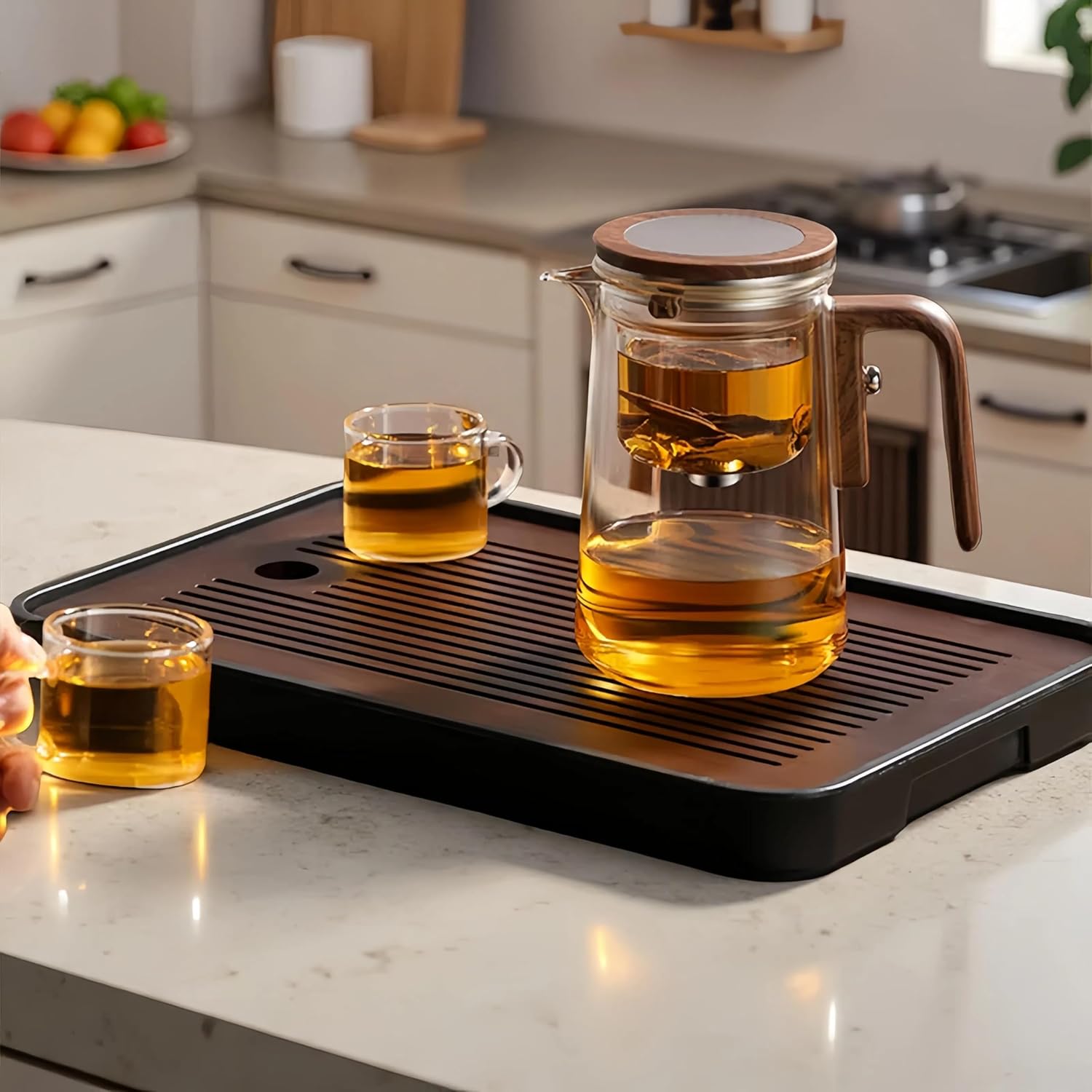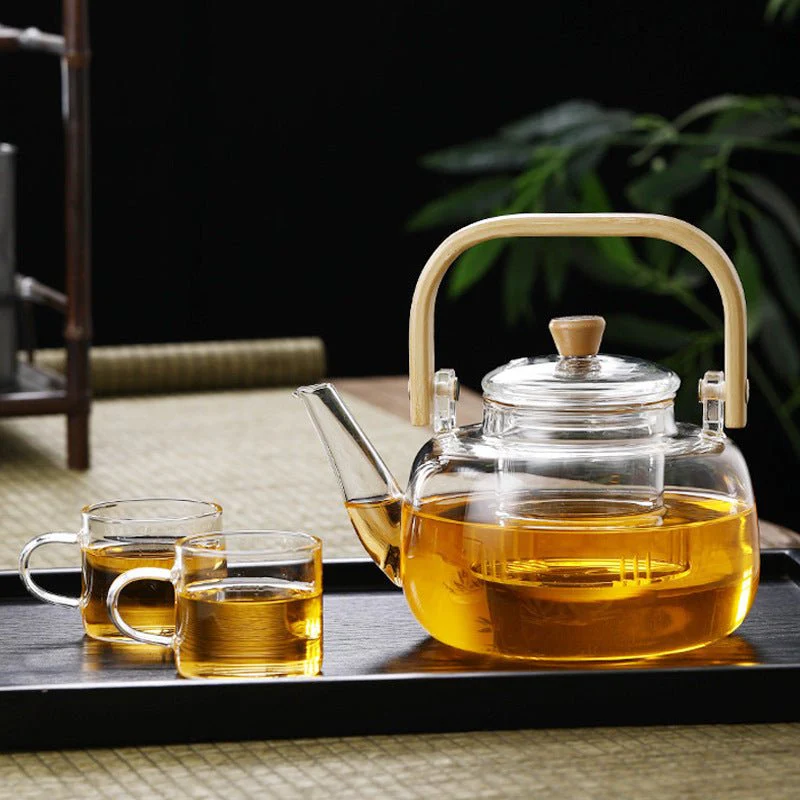Curious Stories about the History of Chinese Teaware
2025-08-01
Chinese tea comes in a wide variety of types, with particular emphasis on color, aroma, taste, and shape. As a result, a range of utensils is required to fully bring out the characteristics of each type of tea, leading to the rich diversity of Chinese tea ware. Tea ware is not merely a vessel for holding tea during the tea-brewing process; it also constitutes an indispensable part of Chinese tea culture. China boasts a wide variety of tea types, each of which places particular emphasis on color, aroma, taste, and shape. As a result, a range of specialized utensils is required to fully bring out the unique characteristics of each tea, leading to the rich diversity of Chinese tea ware. Tea ware is not merely a vessel for holding tea during the tea-brewing process; it also constitutes an indispensable part of Chinese tea culture. Since tea had become a daily beverage for the Chinese people during the Tang Dynasty, there was an even greater emphasis on the aesthetic enjoyment of tea drinking. As a result, tea ware pieces were all elegant and exquisite, not only possessing aesthetic value but also high artistic merit.
By the mid-Tang Dynasty, not only were there a wide variety of tea utensils, but there was also a focus on the quality of the materials used, with utensils selected according to the type of tea. There were as many as 28 types of tea-brewing utensils, including ash trays, charcoal tongs, tongs, paper bags, grinders, sieves, and water containers, covering every step of the process from preparing charcoal, boiling tea, sweeping dust, measuring tea, pouring tea, and washing tea, each step revealing its own intricate details. Compared to the Tang Dynasty, tea-drinking methods in the Song Dynasty had undergone significant changes.
The primary change was that the Tang Dynasty's method of boiling tea was gradually abandoned by the Song Dynasty, with the “pointing tea” method becoming the predominant method at the time. Ming Dynasty tea utensils represented a major transformation compared to those of the Tang and Song Dynasties. Although Ming Dynasty tea utensils were simpler, they still had specific requirements, emphasizing manufacturing methods, specifications, and quality. The emergence of new tea utensils and improvements in tea utensil manufacturing techniques marked significant progress compared to the Tang and Song Dynasties. This is particularly evident in tea-drinking utensils, with the most notable features being the emergence of small teapots and significant changes in the shape and color of tea bowls.
By the mid-Tang Dynasty, not only were there a wide variety of tea utensils, but there was also a focus on the quality of the materials used, with utensils selected according to the type of tea. There were as many as 28 types of tea-brewing utensils, including ash trays, charcoal tongs, tongs, paper bags, grinders, sieves, and water containers, covering every step of the process from preparing charcoal, boiling tea, sweeping dust, measuring tea, pouring tea, and washing tea, each step revealing its own intricate details. Compared to the Tang Dynasty, tea-drinking methods in the Song Dynasty had undergone significant changes.
The primary change was that the Tang Dynasty's method of boiling tea was gradually abandoned by the Song Dynasty, with the “pointing tea” method becoming the predominant method at the time. Ming Dynasty tea utensils represented a major transformation compared to those of the Tang and Song Dynasties. Although Ming Dynasty tea utensils were simpler, they still had specific requirements, emphasizing manufacturing methods, specifications, and quality. The emergence of new tea utensils and improvements in tea utensil manufacturing techniques marked significant progress compared to the Tang and Song Dynasties. This is particularly evident in tea-drinking utensils, with the most notable features being the emergence of small teapots and significant changes in the shape and color of tea bowls.
The most innovative tea ware of the Ming Dynasty was the small teapot, while the tea bowl underwent improvements. Both were made of porcelain or ceramic. During this period, white porcelain tea ware and blue-and-white porcelain tea ware from Jingdezhen, Jiangxi, and purple clay tea ware from Yixing, Jiangsu, saw tremendous development. In terms of color, shape, variety, and style, they entered a new era of exquisite refinement. Compared to the Tang and Song Dynasties, Ming Dynasty tea ware represented a major transformation. Although Ming Dynasty tea ware was simpler, it still had specific requirements, emphasizing manufacturing methods, specifications, and quality. The emergence of new tea ware and improvements in tea ware manufacturing techniques marked significant progress compared to the Tang and Song Dynasties. This is particularly evident in drinking utensils, with the most notable features being the emergence of small teapots and significant changes in the shape and color of tea cups.
The most innovative tea ware of the Ming Dynasty was the small teapot, while the tea bowl underwent improvements. Both were made of porcelain or ceramic. During this period, white porcelain tea ware and blue-and-white porcelain tea ware from Jingdezhen, Jiangxi, and purple clay tea ware from Yixing, Jiangsu, saw tremendous development. In terms of color, shape, variety, and style, they entered a new era of exquisite refinement.
RORA-Your Trusted Partner in glass teapot
WhatsApp: 86181 1810 7551
Email: info@rora.top




